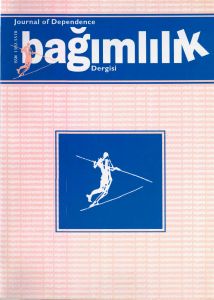Tobacco, alcohol and substance use prevalence among 10th grade students: İstanbul sample
Keywords:
Istanbul, tobacco, alcohol, substance use, prevalenceAbstract
Objective: The aim of this research is to evaluate the prevalence of tobacco, alcohol and substance use among 10th grade students, and to compare the findings with previous research.
Method: The research was conducted among 10th grade students in İstanbul. 43 schools were sampled by using the multistage cluster sampling method. In order to be able to compare the results of the research with a previous research that was carried out in 2001, a similar sampling method and questionnaire was used.
Results: Lifetime prevalence of tobacco use was 37%, alcohol use was 51.2%. The same rates were 5.9% for inhalant use, 5.8% for marijuana use, 4.4% for flunitrazepam use, 3.7% for benzodiazepine use, 3.1% for ecstasy use and 1.6% foe heroin use. When the risk for using tobacco, alcohol and substance at least once in lifetime is compared according to gender, it was found that males have greater risk for using any of these substances except for benzodiazepine. Tobacco and alcohol use was more prevalent among children of low income families while flunitrazepam was less prevalent compared to children of high-income families. Prevalence of tobacco use was higher among students enrolled in a private school while alcohol and heroin use was more prevalent among students enrolled in other type of schools. The least available substance was heroin. Nearly half of the students who had used one of these substances had obtained their first drug from an elder family member.
Conclusion: It was observed that the lifetime prevalence of substances other than tobacco, alcohol and benzodiazepine had increased among 10th grade students in İstanbul. Unlike previous research findings the prevalence of substance use was similar in all socioeconomic status. It is thought that the attitudes and thoughts of the family regarding substance use is a risk factor.
References
Özer A. Ortaöğretimde Öğrencilerin Psikoaktif Madde Kullanımına Yaklaşımı ve Demografik Özellikler. Uzmanlık Tezi, İstanbul: Bakırköy Ruh ve Sinir Hastalıkları Hastanesi, 1991.
Yazman Ü. Lise Gençliğinin Psikoaktif Maddelere Bakışı ve Kullanım Oranlarının Türkiye- İstanbul Örneği ile İncelenmesi. Uzmanlık Tezi, İstanbul: Bakırköy Ruh ve Sinir Hastalıkları Hastanesi, 1995.
Ögel K, Tamar D. Uyuşturucu maddeler ve Öğrenci Anketi Bulguları, İstanbul: AMATEM-Özel Okullar Derneği Yayını, Prive Ltd, 1996: 12-23.
Ögel K, Tamar D, Evren C, ve ark. Lise gençleri arasında tütün, alkol ve madde kullanım yaygınlığı. Turk Psikiyatri Derg 2001; 12: 47- 52.
Ögel K, Çorapçıoğlu A, Sır A, ve ark. Dokuz ilde ilk ve ortaöğretim öğrencilerinde tütün, alkol ve madde kullanım yaygınlığı. Türk Psikiyatri Dergisi 2004; 15: 112-118.
Birleşmiş Milletler Uyuşturucu ve Suç Ofisi. Madde kullanımı üzerine ulusal değerlendirme çalışması: 6 büyük şehirde elde edilen sonuçlar. Türkiye Proje Ofisi, Ankara: 2004.
Hibell B, Anderson B, Bjarnason T ve ark. Alcohol and other drug use among students in 26 European countries. The Swedish Council for information on alcohol and other drugs, CAN. Council of Europe. Co-operation group to combat drug abuse and illicit trafficing in drug, 1995.
Johnston L, O’Malley P, Bachman J. National survey results on drug use from the monitoring the future study, 1975-1998. U.S Department of health and human services, Public Health Service National Institutes of Health, 1999.
Pandina R, Hendren R. Other dugs of abuse: inhalants, designer drugs, and steroids. Addictions: A Comprehensive Gıidebook, McCrady BS, Epstein EE (Editors). New York.: Oxford University Press, 1999: 171-184.
Acuda SW, Eide AH. Epidemiological study drug use in urban and rural secondary schools in Zimbabwe. Cent Afr J Med 1994; 40: 207-212.
MEB (2003) Daire Baskanligi/Dosyalar/2003-2004
Silva MT, Barros RS, de Magalhaes MP. Use of marijuana and other drugs by collage students of Sao Paulo, Brazil. Int J Addiction 1994; 29: 1045-1056.
Çakıcı E, & Çakıcı M. KKTC gençliğinde uyuşturucu madde kullanımı yaygınlığı. Lefkoşe: KKTC Devlet Basımevi, 2000.
Newcomb MD, Maddehian E, Bentler PM. Risk factors for drug use among adolescents: Concurent and longitudinal analysis. Am J Public Health 1986; 76: 525-530.
Newcomb MD, Felix-Ortiz M. Multiple protective and risk factors for drug use and abuse: Crosssectional and prospective findings. J Consult Clin Psychol 1992; 63: 280-296.
Johnston L, O’Malley P, Bachman J. Monitoring the Future: National survey results on drug use: 1975-2000. U.S Department of health and human services, Public Health Service National Institutes of Health, 2000.
Bachman JG, Johnston LD, O’Malley PM. The Monitoring the Future project after 27 years: Design and procedures. Monitoring the Future Occasional Paper No. 54. Ann Arbor, MI: Institute for Social Research, 2001.
Downloads
Published
Issue
Section
License
Copyright (c) 2025 Journal of Dependence

This work is licensed under a Creative Commons Attribution-NonCommercial-NoDerivatives 4.0 International License.
The Journal and content of this website is licensed under the terms of the Creative Commons Attribution-NonCommercial-NoDerivatives 4.0 International (CC BY-NC-ND 4.0) License. This is in accordance with the Budapest Open Access Initiative (BOAI) definition of open access. The Creative Commons Attribution-NonCommercial-NoDerivatives 4.0 International (CC BY-NC-ND 4.0) allows users to copy, distribute and transmit unmodified article, and make noncommercial use of the article. The CC BY license permits non-commercial re-use of an open access article, as long as the author is properly attributed.

